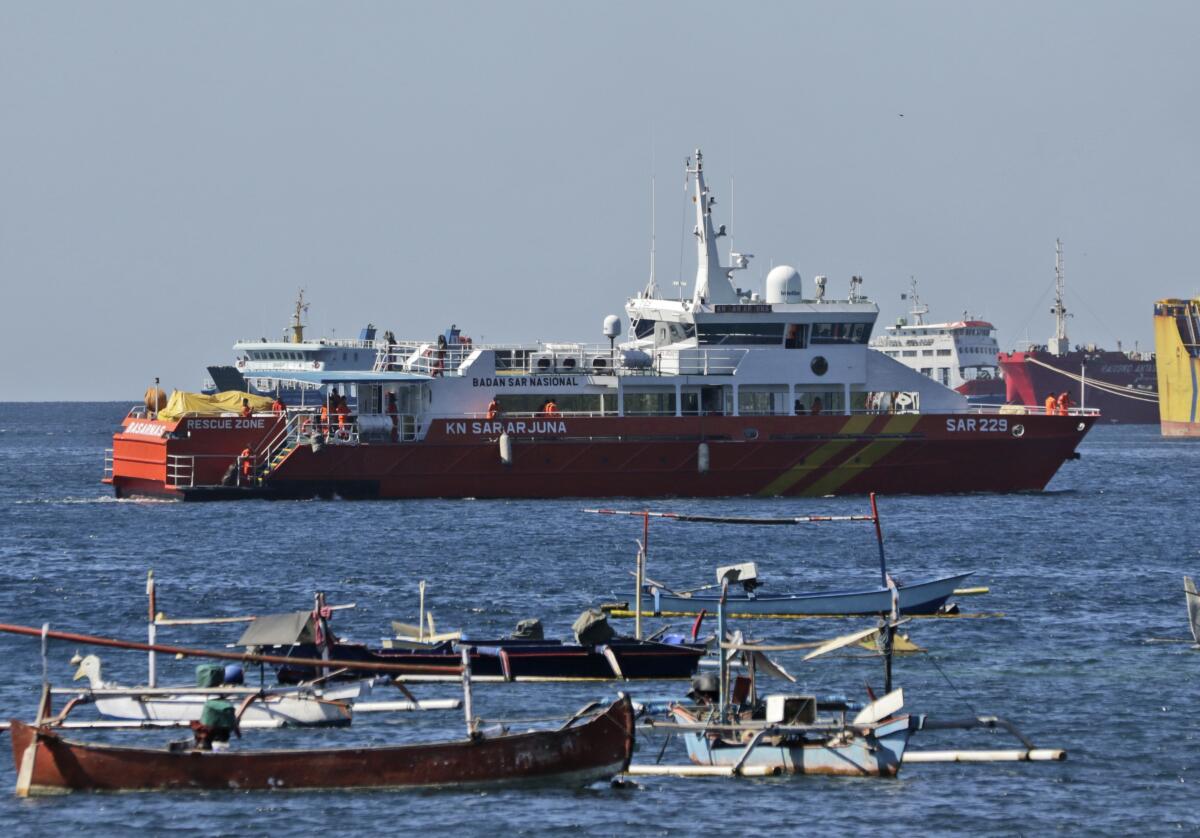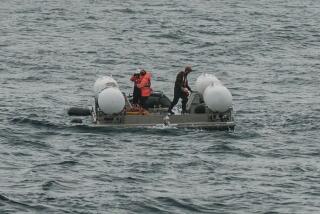Missing Indonesian submarine follows other underwater disasters

- Share via
BANGKOK, Thailand — The disappearance since Wednesday of an Indonesian submarine off the resort island of Bali follows dozens of other disasters in the depths of the world’s seas.
Military secrecy limits public access to details of accidents that show how technological advances are still no match for dire risks at great depths. A search continued Friday for the KRI Nanggala 402, with less than a day’s supply of oxygen left for its 53 crew members, as concern mounted that the vessel may be stranded in waters too deep for rescue or recovery. That has happened in submarine disasters in the past.
Here are some of them:
___
Fourteen seamen died on a Russian nuclear submarine in the Barents Sea in 2019 from toxic fumes from a fire. The Kremlin did not divulge the name of the sub, but Russian media said it was a nuclear-powered research vessel called the Losharik that was designed for sensitive missions up to 3,000 feet deep.
In 2008, Russia lost 20 crew members aboard its nuclear-powered Nerpa, part of its Pacific Fleet, after a firefighting system was accidentally triggered. That was Russia’s deadliest submarine accident after an explosion caused the sinking of the Kursk on Aug. 12, 2000, killing all 118 crew members.
___
Argentina’s ARA San Juan disappeared on Nov. 15, 2017, killing all 44 crew members, as it was returning to its base in Mar del Plata after military exercises. The wreckage was found during a search by Ocean Infinity of the U.S. almost a year later at a depth of about nearly 3,000 feet east of Patagonia’s Valdes Peninsula. A legislative probe found that the disaster resulted from the inefficiency of naval commanders and budget limitations, not an attack or collision. The submarine had been cut in half when it was refitted in 2008 to 2014, and experts said that could have compromised its safety.
The Argentine navy has detected what appeared to be seven satellite messages sent from a missing submarine, but communication with the vessel was never established, and its whereabouts in the south Atlantic remained a mystery late Saturday.
___
China’s Great Wall Ming 361 was reported lost in 2003 in the sea between Shandong and North Korea. The 70 people aboard suffocated when the sub’s diesel engines malfunctioned and consumed all its oxygen. It was the first time China had disclosed a fatal submarine accident.
___
France, Israel, the U.S. and the Soviet Union all lost submarines in 1968. France’s Minerve was not found until 2019, when it was discovered in waters east of its home port, Toulon. It sank in rough seas two days after the Israeli Navy’s INS Dakar disappeared in the eastern Mediterranean with more than 60 people aboard. That submarine’s location was unknown until 1999, when it was located 9,500 feet below the surface between Crete and Cyprus. The Soviet Union’s K-129 and the USS Scorpion also were lost that year.
___
France also lost the Daphne class submarine Eurydice and its 57 crew in 1970 when it exploded off the coast of Toulon.
___
The deadliest U.S. submarine disaster was the sinking of the nuclear-powered USS Thresher on April 10, 1963, killing all 129 crew on board during a test dive in the Atlantic Ocean about 220 miles off Massachusetts’ Cape Cod. Documents made public in 2020 showed that the sub imploded as it descended more than 800 feet. The disaster helped drive safety improvements.
___
Australia’s AE1 submarine was lost off the New Guinea island of New Britain in September 1914 with 35 Australian, New Zealand and British crew members, in the first Allied submarine loss of World War I. It was located nearly 1,000 feet below the sea’s surface only in December 2017, 103 years later.
___
Indonesian navy officials say an electrical failure could have prevented the KRI Nanggala 402 from using emergency procedures to resurface. The discovery of an unidentified object with high magnetism in the area, at a depth of 165 to 330 feet, raised hopes that it might be the missing submarine. But the navy has said it may be at 2,000 to 2,300 feet, much deeper than its collapse depth — the depth at which water pressure would be greater than the hull could withstand. The vessel’s collapse depth was estimated at 655 feet by a South Korean company that refitted the vessel in 2009 to 2012.
More to Read
Sign up for Essential California
The most important California stories and recommendations in your inbox every morning.
You may occasionally receive promotional content from the Los Angeles Times.










